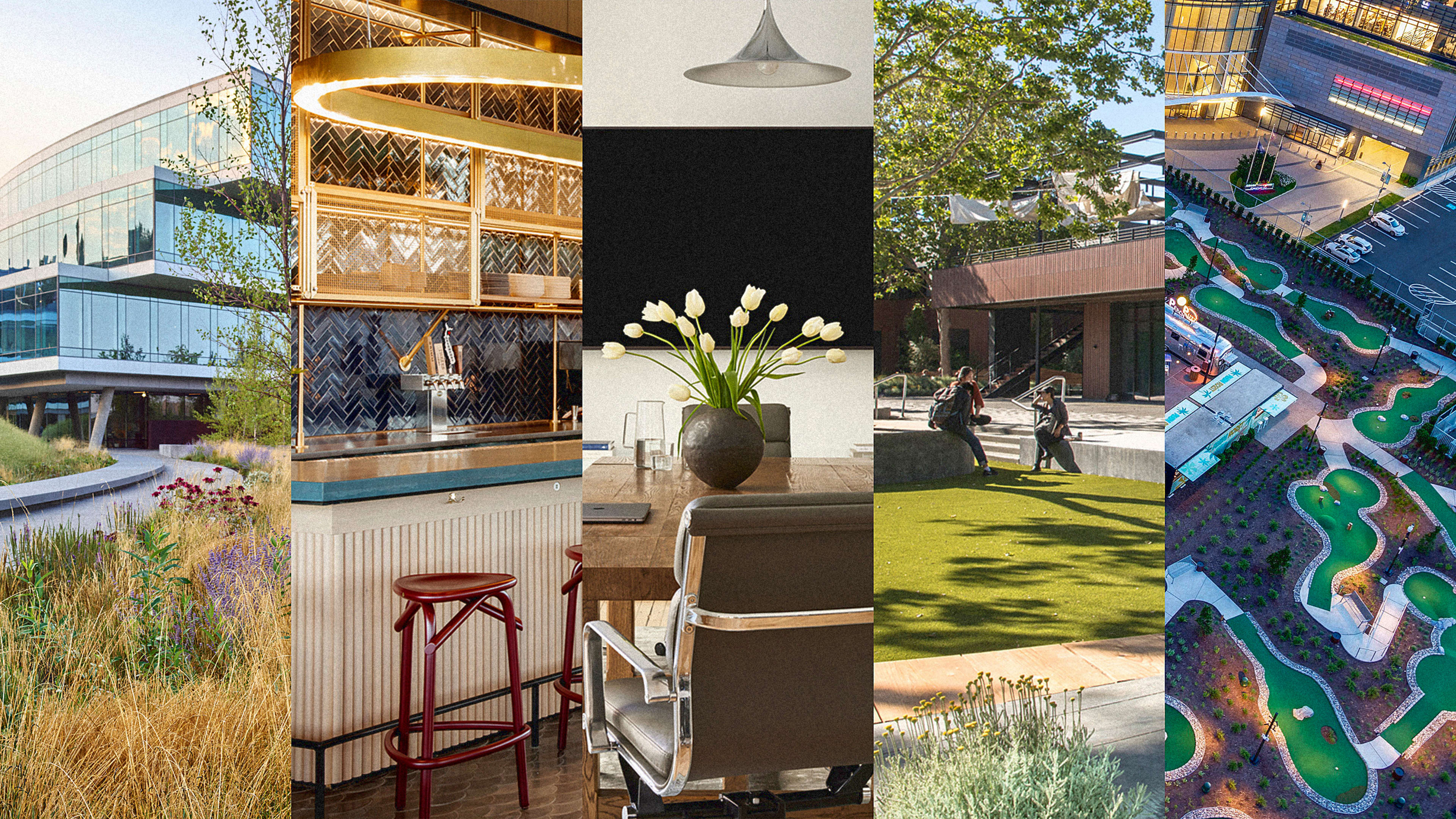The pandemic emptied offices around the world, and dramatically altered expectations about where work can happen. In 2022, many companies decided that, after months or years of their employees working from home, it was finally time to come back to the office. To help convince people that this might not be such a bad thing, many companies, designers and developers began thinking much differently about what and office should be. Here are five ways the office is becoming more than it was.
More like a living room

The pandemic normalized working from home and all the comforts that brings. Whether as a way to embrace this level of comfort or to compete against it, some companies are redesigning their offices to feel more like homes. Residential design is bleeding into several new office spaces, including that of the venture fund Inspired Capital, which looks like a 7,000 square foot living room, and real estate brokerage Avenue 8, which modeled its office after a Parisian loft. In contrast to the snacks and games many companies previously offered as amenities to their employees, these offices are making comfort their primary lure.
More like a park
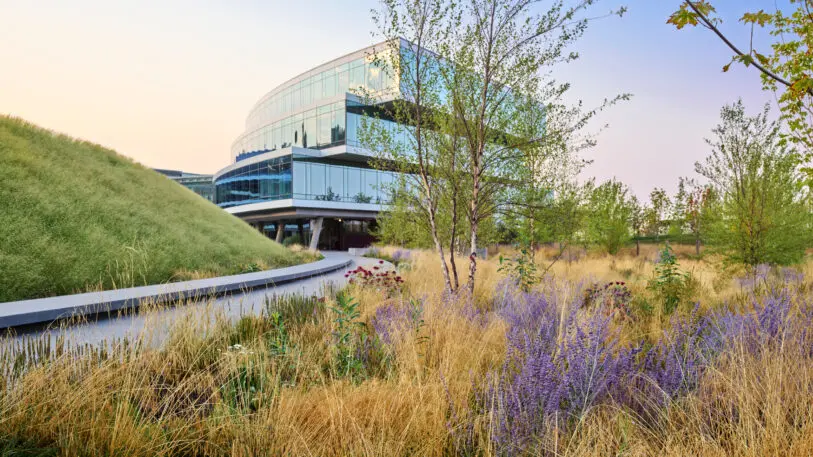
Pandemic lockdowns have helped many people see the value of public outdoor space. Companies are recognizing this growing desire to get outside by integrating outdoor park spaces into their redesigns. In Seattle, Expedia’s new headquarters features an array of outdoor spaces on a campus lining Puget Sound. It even donated part of its land to the city, creating a publicly accessible beach and a continuation of a waterfront bicycle path. And in New York, the renovation of a landmarked 1980s skyscraper includes a revamp of the privately owned public space that sits alongside it. The building’s owners have replaced an enclosed patio space with a densely planted garden designed by Snøhetta, adding shaded seating and a water feature beneath a canopy of more than 40 mature trees—all in the dense skyscraper jungle of Midtown Manhattan.
More multifunctional
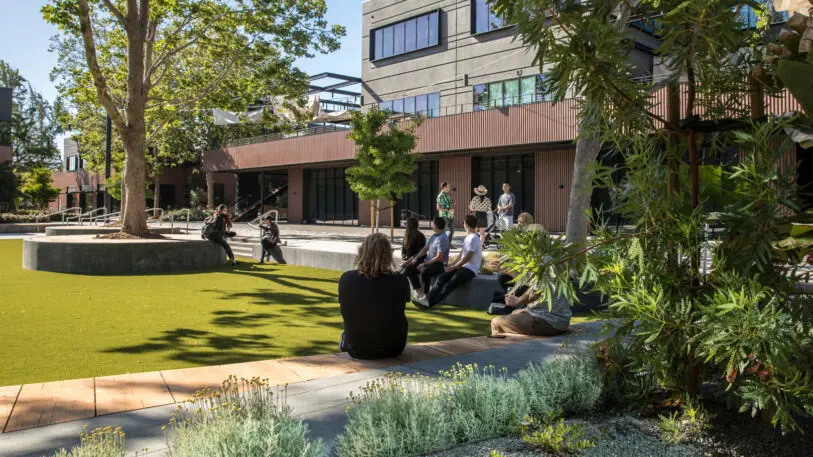
When architecture firm WRNS Studio was hired to redesign a 1980s suburban office park in Silicon Valley, it was what one architect called a “fried egg”: a cluster of five offices surrounded by parking lots. The designers effectively scrambled the egg instead, tearing out asphalt parking lots and unused decorative lawns and replacing them with outdoor spaces for lunches, meetings, company gatherings, and public events. A former car-oriented space that had fallen out of favor with tenants is now a thriving multifunctional campus.
More like a bar
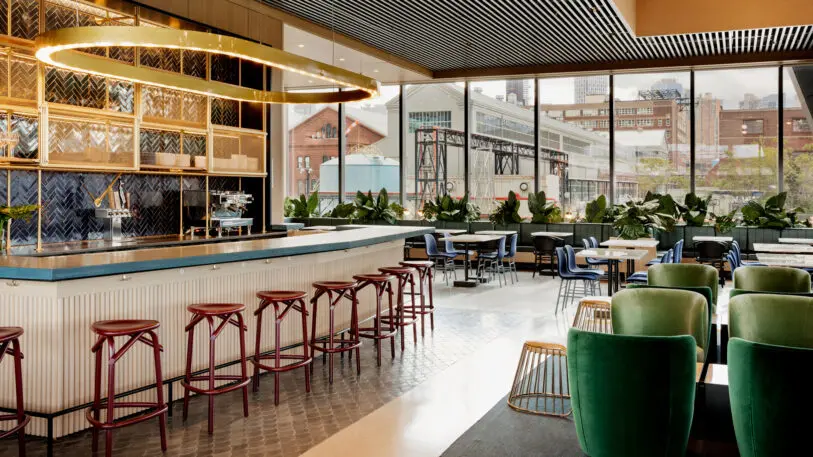
Whether it’s to host events, encourage teambuilding, or just have a place to get an after-work drink, more office buildings are beginning to boast their own bars. One New York architecture and interiors firm, Fogarty Finger, has recently designed several office spaces with their own bars. Some are more suited to after-hours events, like a ground floor bar and patio at a building in the Brooklyn Navy Yard. Others are integrated into the office environment, like a second floor bar in a tower in Jersey City, where people may be just as likely to be having late afternoon drinks as a meeting with their manager.
More fun
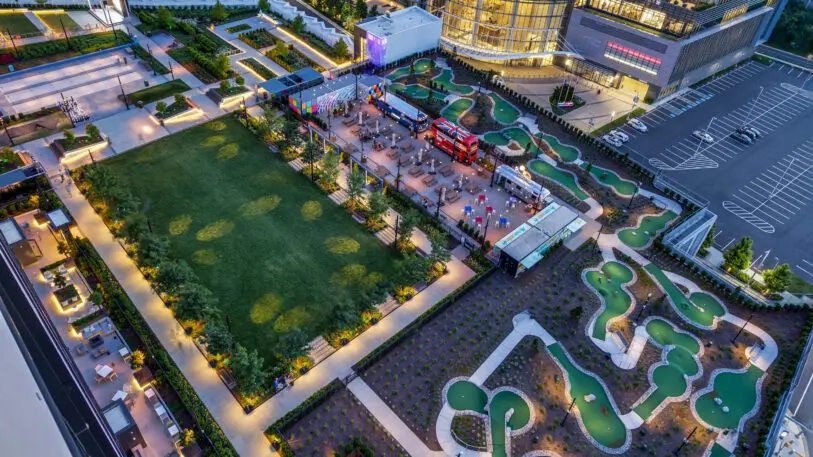
On an 11th floor roof at the multi-building corporate headquarters of Capital One Bank, employees can duck out of their offices and hit the green. The newest amenity at this office in Tysons, Virginia, is an 18-hole miniature golf course. Called Perch Putt, it’s collocated with a bar and outdoor concert venue and a few craned-in food trucks. The whole space is open to the public, but can also serve as an unconventional place to take a walking (and putting) meeting.
Recognize your brand’s excellence by applying to this year’s Brands That Matter Awards before the early-rate deadline, May 3.
